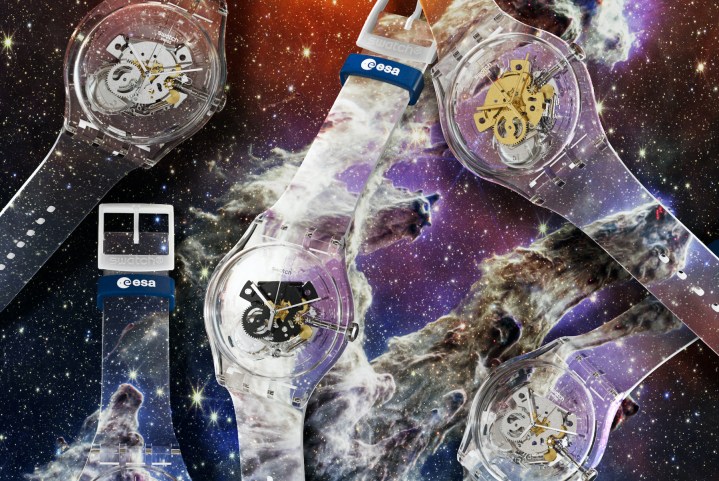
Space fans have been marveling at the stunning images beamed to Earth by the James Webb Space Telescope ever since it went into operation last year.
The most powerful space telescope ever built is using its near-infrared camera (NIRCam) to peer deeper into space than ever before, with scientists hoping that its discoveries could help unlock some of the mysteries of the universe.
Science aside, many of the images are beautiful in their own right, showing colorful nebulae and dazzling galaxies far from Earth.
Now, in a special partnership between the European Space Agency and watchmaker Swatch, it’s possible to create your own watch face using one of these amazing images.
Six new “Swatch X You” designs have been made available for a limited time, with each one featuring a space image captured by these groundbreaking telescopes.
You can design your watch face using the online configurator on the Swatch X You website.
The watch, which costs $135, will be delivered along with an ESA-branded strap, a special sleeve, and a postcard showing the telescope image used for the design.
The offer launched on Wednesday and will run through December 17.
ESA’s Professor Carole Mundell commented on the collaboration, describing it as a “wonderful opportunity to share our fascination for space and science through these beautiful, inspiring designs.”
Mundell added: “Astronomers were originally the keepers of date and time. Today, our telescopes look back thousands, millions, even billions of years. Whenever you check the time, these watches will also give you a breathtaking glimpse of time and space on a cosmic scale.”
In a related effort, the United States Postal Service (USPS) last year launched a specially designed stamp to celebrate the James Webb Space Telescope. The image on the stamp shows an artist’s digitally created depiction of the telescope, set against a striking starscape.
Editors' Recommendations
- James Webb images capture the galactic winds of newborn stars
- See 19 gorgeous face-on spiral galaxies in new James Webb data
- James Webb Space Telescope celebrated on new stamps
- James Webb spots tiniest known brown dwarf in stunning star cluster
- James Webb provides a second view of an exploded star


